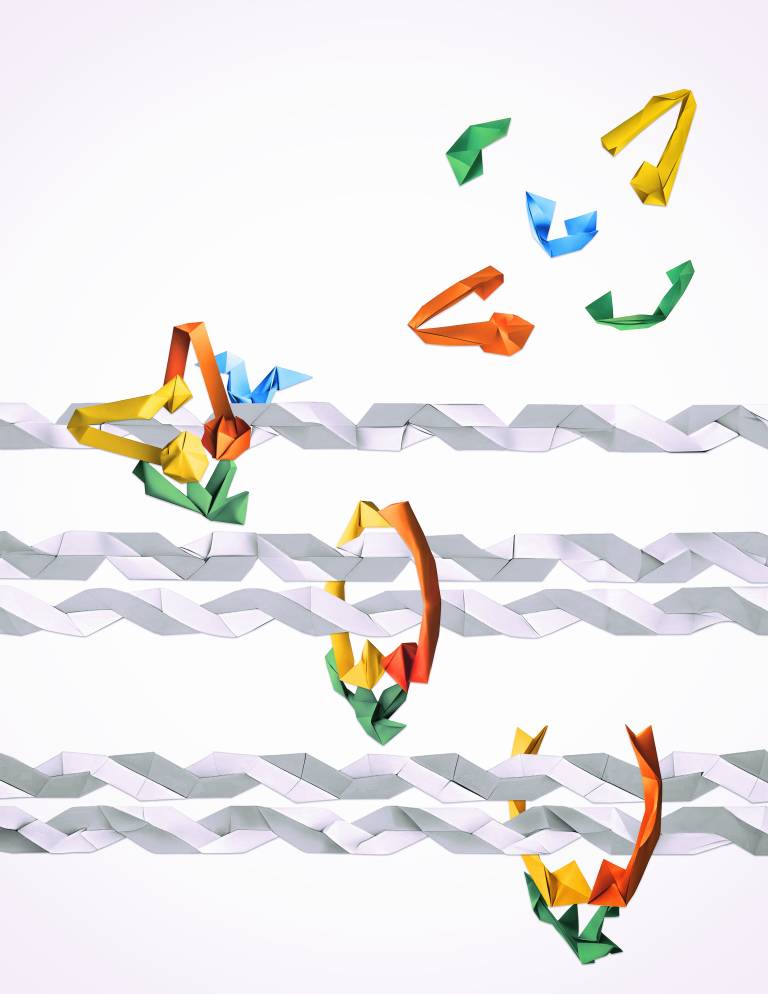New study on the mechanics of the sister chromatids cohesion by the Molodtsov lab
23 October 2023
New research by the Molodtsov lab, published in Nature, reveals how protein complex cohesin counteracts mechanical forces generated by the mitotic spindle and paves the way for understanding cohesin’s mechanical stability during transcription and DNA replication.

In healthy cell division, the replicated DNA forms sister chromatids that must remain physically connected until their separation during the so-called anaphase to ensure that genomes pass correctly from one generation to another.
A ring-shaped protein complex called cohesin physically links sister chromatids and, like an elastic band, resists the forces generated by mitotic spindle that ultimately move chromatids to the newly formed daughter cells ensuring that sister chromatids stay tied up until the right moment.
Although it is its primary function, since its discovery over 25 years ago, it remained unknown how cohesin responds to mechanical force. To address this question, in this research recently published in Nature Structural & Molecular Biology, we probed how interaction between DNA and single cohesin molecules depended on force. We achieved this by using an optical trap while ensuring that we apply force to the single complexes using single-molecule fluorescence. Our results showed that one cohesin ring could embrace two DNA molecules, much like it does during cell division, and could resist up to 20 piconewtons of force. We also discovered that it is always the same weakest interface in the cohesin ring that breaks under external force that releases the DNA. This is just like any other ring that would always break at the same, weakest interface, irrespective of where and how the force is applied.
These results explain the stability of the cohesin during cell division, but also bring us closer to understanding its mechanical role during DNA transcription and DNA replication and ultimately how it is dysregulated in disease.
Links
- Research article in Nature
- Dr Maxim Molodtsov's academic profile
- UCL Physics & Astronomy
- UCL Institute for the Physics of Living Systems
 Close
Close

